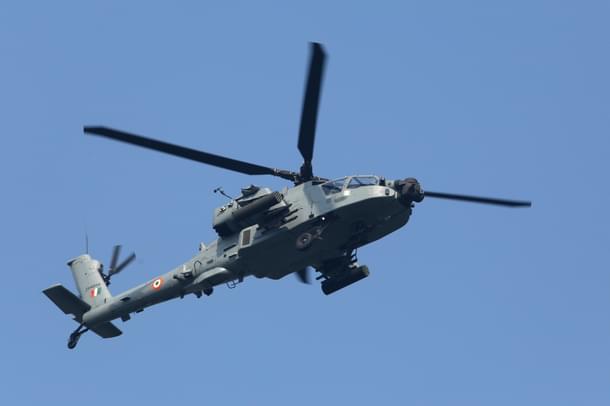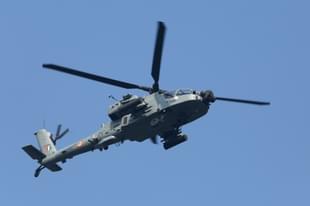News Brief
India Negotiating Purchase Of More Apache Attack And Chinook Heavy-Lift Helicopters: Senior Boeing Official
Swarajya Staff
Jun 19, 2022, 01:12 PM | Updated 01:56 PM IST
Save & read from anywhere!
Bookmark stories for easy access on any device or the Swarajya app.


India is in talks to buy more AH-64E Apache attack helicopters and the Chinook CH-47F(I) heavy-lift helicopters, Torbjorn B (Turbo) Sjogren, Vice President, International Government and Defence, at Boeing, has said.
India had purchased 22 Apaches and 15 Chinooks in a $3 billion deal signed with the United States (US) in September 2015. A deal for six more Apache attack helicopters at a cost of around $800 million was signed in 2020.
Chinooks
Before it inducted Chinooks, the Indian Air Force's heavy-lift rotary-wing capability had been severely constrained due to the small number and poor serviceability of its Soviet-era Mi-26 helicopters.
Chinooks are faster, more agile, have a smaller rotor diameter, and have more landing flexibility. These factors make Chinooks more capable than Mi-26 for negotiating narrow valleys, a capability that the Indian Air Force (IAF) needs to deliver cargo and troops along the border in the Himalayas.
Moreover, the Chinook provides a higher degree of loading and unloading flexibility and a greater number of cargo, troops, and equipment configurations. Loading options on a Chinook include a wide ramp at the rear, multiple doors across the fuselage, and three external ventral cargo hooks to carry underslung loads.
Apaches
Apache helicopters come armed with Hellfire precision-strike missiles and air-to-air Stinger missiles. Of the IAF's 22 Apaches, 11 are equipped with the Longbow fire control radar system. Along with the Longbow radars, these missiles can wreak havoc on enemy armour. It is not for nothing that the Apaches are often referred to as "tank killers."
Apache's chin-mounted gun can send 625 armour-penetrating bullets per minute ripping into the targets. It is equipped with the Hellfire missile, designed as a heavy tank killer to destroy Soviet armour on the battlefields of Western Europe.
At the peak of the military crisis with China in eastern Ladakh, Apache helicopters were spotted flying in and out of the Leh Air Base. Both India and China had deployed armoured units, including tanks, during the standoff, which began in May 2020 and continues at some friction points.
Apache attack helicopters were also spotted at a base in Sikkim, near the border with Tibet, in February this year, as the disengagement with China was underway in some parts of eastern Ladakh.
Apart from eastern Ladakh, the 17,000-feet-high north Sikkim plateau is perhaps the only other place along the India-China frontier where the Indian Army has deployed tanks and could face armoured units of the People's Liberation Army in the event of a military crisis.
In July 2020, Global Times reported that China had deployed its Z-10 attack helicopters "to the country's western plateau regions" amid a standoff with India. Designed with help from Russia's Kamov Design Bureau, the Z-10 has an under-nose turret for a 23-millimetre or 30-millimetre cannon. It can fire anti-tank missiles, including the AKD-10 missile, which is considered broadly equivalent to the Hellfire missile.
Also Read:
Five Reasons Why The Chinooks Will Be A Game Changer For The IAF





